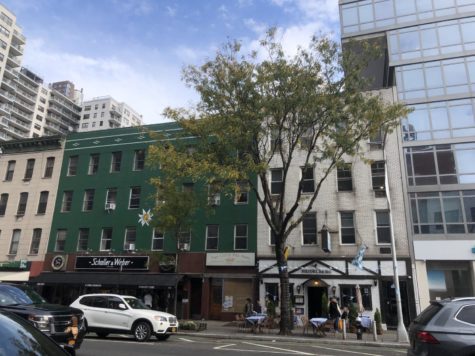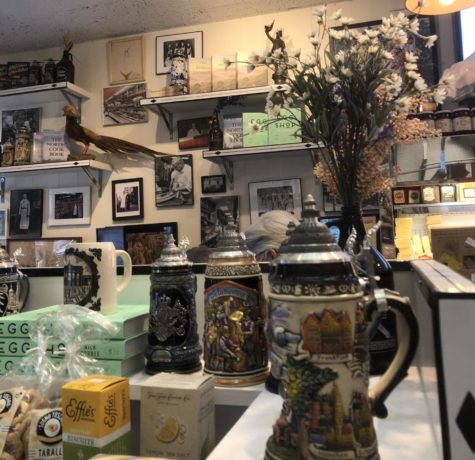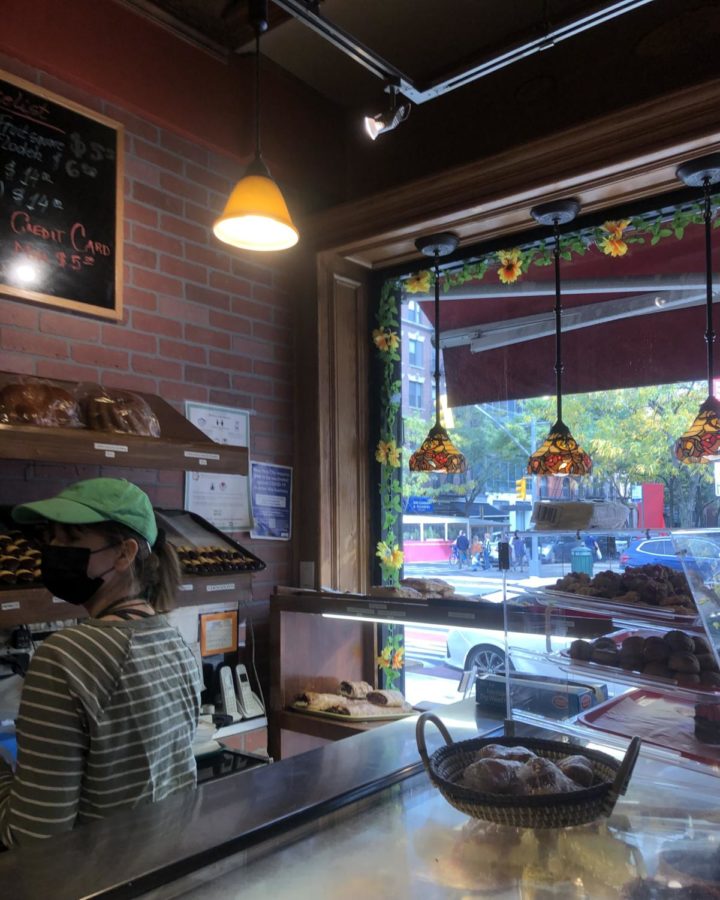Yorkville’s History
A look into those clinging to Northern and Central European culture in Yorkville and why these family-owned businesses are disappearing.
A worker at the Budapest Cafe, an Austro-Hungarian bakery, serves pastries like Sachertorte and strudel.
86th Street once went by many names, among them Sauerkraut Boulevard and Goulash Avenue. Today, it’s hard to believe that the stretch between the 4 train and the Q train could be filled with bakeries with special ovens making tall baumkuchen cakes, bustling dance halls, and lively little European-style cafes.
Yorkville, formerly known as Germantown, is today thought of as part of the greater Upper East Side area of Manhattan; it stretches from 72nd Street and 3rd Avenue to 96th Street and the East River. Yorkville used to have a very distinct cultural identity, but as the neighborhood loses its character, it increasingly blends in with the rest of the Upper East Side.
Towards its beginning, the area was home to German and Irish workers who had built the Croton Aqueduct, which starts in Croton, a town in upstate New York, and ends in Midtown Manhattan. Following the General Slocum Disaster, a tragedy in which over a thousand German-Americans were killed in a fire aboard a ship, more working class German families began to move to Yorkville from Kleindeutschland (Little Germany), the German neighborhood on the Lower East Side. As Kleindeutcshland faded away, Germantown began to grow, with people opening grocery stores, bars, bakeries, and sweet shops.
Yorkville transitioned from a primarily German neighborhood to a melting pot of different cultures in the early 1900s. As Germans began moving to the suburbs, Yorkville became a haven for Czechs, Ukranians, Austro-Hungarians, and Slovaks. In the 1930s, during the rise of fascism, there were many anti-Nazi protests by Yorkville residents, and it became a neighborhood where many refugees from Nazi Germany and communist regimes fled to in the 1940s and 50s. However, after the dismantling of the Elevated Train in the 70s, the neighborhood began to lose its character. The “El” trains were dirty and noisy, and removing them caused property values to go up, spurring gentrification of the former working class neighborhood.
Though most of its former residents have moved away, there are still a few people stubbornly clinging to “Old World” culture and tradition. On 86th and 2nd, there are two German family-owned shops: the Heidelberg, a biergarten and restaurant, and Schaller and Weber, a traditional grocery store and butcher shop with an attached Stube serving German street food. “The fact that we’re right next door to each other is really helpful,” said Julio, a manager at the Heidelberg restaurant. “It creates a cultural destination.”

Curious as to why family owned businesses in my neighborhood were shutting down, I visited each one in an attempt to speak to the descendants of the original owners. I had a few hypotheses in mind. Perhaps prices were too high, or people weren’t interested in running the family business anymore.
What I found surprised me. I noticed that while the German businesses are still family owned, they themselves do not run the business; instead, they hire outside workers and managers to run the day-to-day business. At the Budapest Cafe, a Hungarian pastry shop that has recently come under new management, I heard only Spanish, and none of the Slavic tongues that I heard there as a child were being spoken.
The clientele of the Heidelberg has changed, perhaps due to a revival of interest in German culture — biergartens have become increasingly popular in recent years, especially among young people. “We see a lot more young people coming in, and we don’t hear as much German being spoken as we did ten, twenty years ago,” said Julio. “The Q train led to a lot more people walking by and coming in, so we don’t rely on regulars as much as we used to.”
For a few years, the block was entirely covered by construction for the new subway line, making the restaurant hard to find. Then, just a couple years after the completion of the Q line, the business shut down due to COVID-19. Owning the building has made it much easier for the Heidelberg to stay afloat through the ups and downs of the neighborhood over the last 85 years.
But these diverse cultural enclaves may soon be gone for good. Glaser’s, a Bavarian bakery credited with inventing a New York staple, the black-and-white cookie, shut down in 2018. The owners decided to sell the building rather than continue on with the tradition — property values in the neighborhood just keep climbing. This is due to the fact that Yorkville is becoming increasingly corporate: Chick-fil-A, Chipotle, Krispy Kreme, Popeye’s, McDonald’s, and Taco Bell are just a few of the big corporation restaurants that have recently opened franchises in the area.

As the Yorkville neighborhood loses more and more of its character, and increasingly fewer people have a traditional European upbringing, these businesses become less in touch with their history, making it difficult to find real Old World culture in New York. It’s a vicious cycle.
If these businesses hope to stay alive and enrich the neighborhood, the families who own the businesses should be more present in the day-to-day routine, perhaps by being managers or just stopping by to talk to customers, building the intimate relationships that make small businesses so special. This way, Yorkville might have a chance at being known as Germantown again.
“We see a lot more young people coming in, and we don’t hear as much German being spoken as we did ten, twenty years ago,” said Julio, a manager at the Heidelberg restaurant. “The Q train led to a lot more people walking by and coming in, so we don’t rely on regulars as much as we used to.”
Alexandra Smithie is an Arts and Entertainment Editor for 'The Science Survey.' She reviews and edits articles on culture and creativity for this specific...

